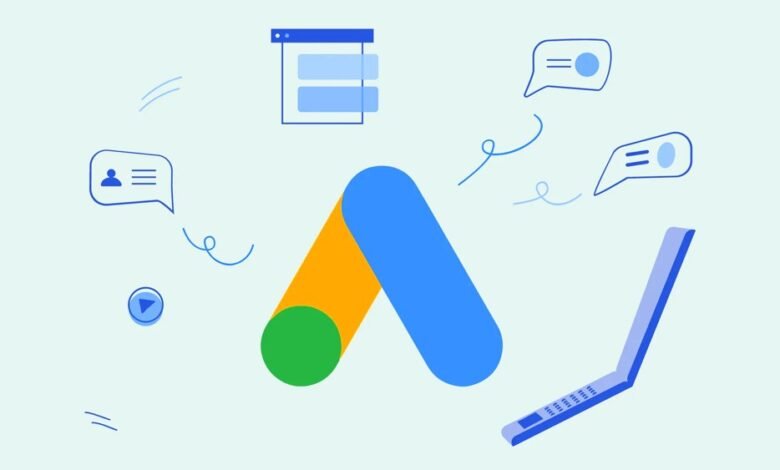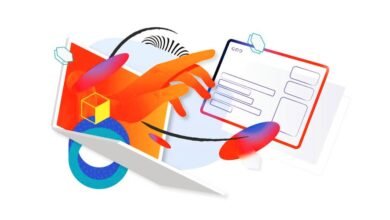TOP INTERVIEW QUESTIONS FOR GOOGLE ADWORDS

Since digital marketing is here to stay, Google AdWords is crucial to your career as a digital marketer or prospective digital marketer. They will influence how much you develop as a marketer and a brand, thus you absolutely cannot disregard them. The top Google AdWords interview questions for 2023 are listed below.
1. WHAT DO WE MEAN BY GOOGLE ADWORDS?
You should anticipate that this will either be the first or one of the first questions you are asked during your Google AdWords interview. A Google advertising service, that is. It makes it possible for companies to be highlighted on Google’s search engine and Google Display Network. Online adverts are displayed by Google’s search engine and its affiliate websites depending on a variety of criteria, including keywords, demographics, interests, and subjects. A firm’s advertisement appears when a user types in specific keywords associated with a good or service the company sells. Simply put, Google AdWords aids in your online visibility.
Read More: TOP INTERVIEW QUESTIONS FOR GOOGLE ADWORDS
2. HOW DO GOOGLE ADWORDS WORK
In order to rank listings, Google AdWords uses a bidding structure. Ad placement is decided based on the maximum bid and quality score. This implies that an advertisement will rank higher the greater its cost and quality score. Businesses who use AdWords to advertise only pay the advertised sum when a user clicks on their ad. One of the crucial interview questions for Google AdWords in 2023 is this one.
3. WHAT IS THE MEANING OF QUALITY SCORE?
It is also known as the Google Quality Score, and it is a ranking that Google provides. The relevance of the keywords selected and the PPC ad design are considered to determine the rating. It essentially measures how pertinent your advertisement is to a user’s purpose. The rating is determined based on a number of variables.
Some of the parameters used to determine this ranking include CTR, performance of prior advertising, keyword relevance, quality and relevancy of your landing page, and ad text relevance. Your advertising’ ranking will rise if your quality score is high without costing you additional money. It’s kind of a win-win circumstance.
4. WHAT DOES PPC STAND FOR AND WHAT IS PPC MARKETING?
Pay Per Click, or PPC, is a term. PPC marketing is a widely used technique where an advertiser is charged every time one of their ads is clicked. PPC is popular because it helps businesses locate customers right away, as opposed to organic marketing, which could take weeks or months to set up and bring traffic to a website. This marketing tactic increases traffic to a company’s website via search engines and other websites. Because the advertiser is only paid when a user clicks on the ad, the practice is known as pay per click advertising. One of the best Google AdWords interview questions is this one.
Read More: Which Ad Network Is Catering Advertising Network Industry For PPC?
5. WHAT IS COST PER CLICK?
The total sum an advertiser is charged for a click is known as the cost per click, or CPC. At the auction, it is decided. It is not apparent. The charge is frequently lower than your highest CPC bid. This is so that you only have to spend what is necessary to outrank your closest rival’s advertisement.
6. WHAT IS CAMPAIGN MANAGEMENT?
The following is one of the crucial Google AdWords interview questions. The process of designing, monitoring, measuring, analyzing, and putting into action any other marketing endeavor for a business on Google AdWords is known as campaign management. To oversee the entire campaign and demonstrate the best ROI, a campaign manager is chosen.
7. DOES QUALITY SCORE AFFECT AD POSITION AND CPC?
It does, indeed. Ad position and CPC are directly and indirectly equivalent to the quality score. Your landing page and ad will rank highly and your costs will be reduced if the quality score is high. This implies that, in comparison to other advertisers, your ad and landing page become more pertinent and helpful to people searching for your term.
8. WHAT IS THE USE OF THE QUALITY SCORE DIAGNOSTIC TOOL
Google analyzes it to determine areas where your ads, landing pages, and keyword choice should be improved. It is used to calculate your CPC, the appropriateness of your landing page and keywords, and it rates the quality and relevancy of your PPC advertising. Your ad rank in the ad auction process is calculated by multiplying it by the maximum bid you placed.
9. DOES GOOGLE’S PAGE RANK OF THE LANDING PAGE AFFECT THE QUALITY SCORE?
No. A landing page’s quality score has no bearing on and little impact on its Google page rank. You ought to keep this in mind. It is one of the crucial Google AdWords interview questions.
10. WHAT IS CTR?
The phrase “Click-Through-Rate” is used. It’s used to assess an advertisement’s effectiveness. It plays a significant role in calculating an advertisement’s quality score.
11. HOW IS IT CALCULATED?
The number of clicks divided by the number of impressions, multiplied by 100, is the formula used to determine CTR. CTR is therefore equal to (Total clicks / Total impressions) x 100.
12. WHAT ARE THE BENEFITS OF A GOOD CTR
Spending is reduced when CTR increases. It shows how effective your ad descriptions, keywords, and headlines were at capturing relevant traffic. Each keyword and advertisement has a unique CTR. KPIs and a high average CTR can make a campaign successful. It has the power to influence how well future campaigns perform.
13. IS THERE AN AVERAGE CTR IN GOOGLE ADWORDS?
Yes there is. The standard CTR in Google AdWords is 2%.
14. WHAT IS THE DIFFERENCE BETWEEN CLICKS AND IMPRESSIONS?
An impression occurs when a user actually watches an advertisement. It depends on whether a person clicks the advertisement. A click is simply when a user selects the advertisement. An impression limits the user to the advertisement and prevents them from exploring further. A click occurs when a user actually carries out the action and clicks on the advertisement.
15. WHAT ARE INVALID CLICKS, AND HOW DOES GOOGLE DETERMINE INVALID CLICKS?
Invalid clicks are those that are discovered to be fraudulent, inadvertent, or brought on by malware. To determine which clicks are legitimate and which ones are not from any user account, Google employs sophisticated algorithms and procedures. In order to establish whether clicks are fraudulent, they also use human reviews. It is yet another crucial Google AdWords interview question.
16. WHAT ARE CONVERTED CLICKS?
These are clicks that result in conversions. Google AdWords no longer tracks them once they become converted clicks.
17. WHAT IS THE DIFFERENCE BETWEEN CPM, CPC AND CPV?
- Cost per thousand: CPM. It is the sum that you are compensated for every thousand impressions that you receive, regardless of how many clicks you get.
- Cost per view, or CPV It is the sum that marketers are required to pay for each individual person that views an advertisement or website.
- Cost per click, or CPC. It is the sum that marketers are charged each click.
18. WHAT SETTINGS CAN’T BE CHANGED ONCE AN AD IN AN ACCOUNT IS CREATED?
Once an account is created, the currency and time zone cannot be changed. This is one of the crucial Google AdWords interview questions.
19. WHAT ARE CONVERSION RATES AND HOW ARE THEY CALCULATED?
Conversion rates are calculated by dividing the total number of conversions by the number of visitors to a website over the same time period. It is employed to keep track of the proportion of users who have carried out a desired action. The better the conversion rate of your website, the more conversions it has.
20. HOW ARE CONVERSION RATES IMPROVED?
Conversion rates can be raised by producing ads that correspond with keywords. The conversion rates will increase when themed ad groups are appropriately developed so that the intended audience is routed straight to the landing page. They can also be enhanced by raising the standard of the landing page.
21. WHAT IS THE USE OF A CONVERSION OPTIMIZER?
A conversion optimizer in AdWords is a tool used to manage bids at the keyword level. It decides which clicks on the ad will be valuable, which leads to a higher ROI.
22. HOW DO YOU TRACK CONVERSIONS IN GOOGLE ADWORDS?
Conversions can be tracked by replacing the standard AdWords tracking code with an additional code that is specific to a given platform in order to track them. This is one of the crucial Google AdWords interview questions. When someone views your advertisement but chooses not to click on it, you may track it using the view-through conversion window option. Additionally, you can access search funnels inside tools and analysis, where you can learn how frequently clients viewed your advertisement prior to conversion as well as when they clicked on an ad for the first time.
23. EXPLAIN THE DIFFERENT TYPES OF KEYWORDS RECOGNIZED BY GOOGLE ADWORDS. HOW DOES GOOGLE FIGURE OUT WHAT BECOMES A KEYWORD.
The selection of a term by Google AdWords is based on the likelihood that visitors will click it. The various types include:
- Research Keywords: These consist of one or two words.
- Purchase: This contains more than three words.
- Consideration: This has two or three words.
- Loyalty: This is usually short.
24. WHAT ARE THE FIVE KEYWORD MATCH TYPES FOR GOOGLE ADWORDS?
- Broad match
- Modified Broad match
- Phrase match
- Exact match
- Negative match
25. WHAT IS KEYWORD INSERTION AND WHAT ARE ITS DIFFERENT TYPES?
A crucial Google Adwords tool is keyword insertion. It allows advertisers to update their adverts with keywords from an ad group automatically. These are the terms in your ad group that initially made your ads appear. It makes your adverts more pertinent to individuals looking for what you have to offer.
The various kinds of keyword insertions include:
- Title case: Here, the first letter of all keywords are capitalized.
- Lower case: In this, no letters are capitalized.
- Sentence case: Here, only the first letter of the first keyword is capitalized.
26. WHAT ARE SOME REASONS WHY KEYWORD INSERTION MIGHT NOT WORK?
- Your ad contains more characters than the specified limit
- The keywords inserted, don’t make sense
- Use of incorrect grammar
- Misspelling keywords
- The landing page doesn’t work
- Using keywords for dynamic search ads
- Using keyword insertion on ads which promote sexual content
27. WHAT ARE SOME OF THE BEST PRACTICES IN SETTING UP KEYWORD INSERTION FOR ADS?
- Group your keywords logically
- Use one ad group per creative theme
- Use dynamic keyword insertion to embed keywords in relevant ad creatives.
- Couple keyword insertion with ad groups which contain keywords that relate to your product or service, location, or both
- Ensure that ads are well-structured
- Follow proper grammar and style guidelines after keywords are inserted
- Pair keyword insertion with a strong brand message
- Use strong CTAs
- Use only the variants of your keywords which you want to see inserted
28. WHAT IS AD ROTATION?
The Google AdWords campaign feature known as “ad rotation” automatically rotates your Google AdWords ad inside the ad group. It involves displaying various advertising in one place on any website. You can tell Google how it should cycle your ad based on things like which advertisements are the most effective. With each new page load, during a single page load, or both, they can be rotated. Additionally, you can uniformly rotate your advertisement. The advertisements are displayed in the same spot and frequently follow the same format. You can indicate how frequently you want the ads in your ad group to be served in relation to one another using the ad rotation parameter.
29. HOW DO YOU ROTATE AN AD ON GOOGLE ADWORDS?
- Set ad rotation for your campaign
- Sign in to your Google Ads account
- Select “All Campaigns” in the navigation panel
- Select the campaign you want to change
- Click “Settings” in the page menu
- Click “Additional Settings”
- Select“Ad Rotation”
- Choose an ad rotation method
- Save
30. WHAT ARE GOOGLE AD EXTENSIONS?
Ad Extensions are the extra details you discover with adverts. By many percentage points, it raises the CTR and visibility of the advertisement. gives details such website links, contact details, and user reviews. In addition to ad headlines and descriptions, it directs advertisers to provide more information. They provide users many means of interacting with your adverts. Automatic and manual extensions are the two different types.
31. HOW DOES GOOGLE DECIDE WHICH EXTENSIONS TO SHOW?
When extensions are expected to boost CTR and if the ad position is high enough, they are displayed in response to searches on Google. Utilizing all of your ad extensions raises the likelihood that it will appear on SERP.
32. MENTION THE DIFFERENT TYPES OF AD EXTENSIONS.
- Sitelinks
- Offer Ads
- Mobile App Extensions
- Location Extensions
- Social Annotations
- Seller Ratings
- Image And Drop Down Navigation Ad Extension
- Click To Message Extension
- Communication Ad
- Review Extension
- Callout Extension
- Price Extension
- Call Extensions
33. WHAT IS REMARKETING?
It is a method which helps you connect with people who have visited or interacted with your website or mobile app.
34. WHAT ARE THE TYPES OF REMARKETING?
- Standard Remarketing: It shows an ad to your past visitors while they browse and use display network websites and apps.
- Dynamic Remarketing: It shows ads to people who visited your website for a particular product or service.
- Video Remarketing: It is used to show ads to people who have interacted with your videos.
- Customer List Remarketing: This is used to upload contact lists given by your customers. Once those people are signed into Google, you can show them ads.
35. WHAT IS ADWORDS EXPRESS?
One of Google’s initiatives is to make Google AdWords simpler for users with less resources. It is aimed towards small and neighborhood businesses who lack the resources to undertake extensive campaigns, such as large expenditures or lots of time and manpower. Here, businesses only need to inform Google of their objectives and what they want to accomplish with Google AdWords; Google will handle the rest. One of the prominent Google AdWords interview questions is this one.
36. WHAT DETAILS DO YOU NEED TO SHARE FOR ADWORDS EXPRESS?
- Business category
- Ad copy
- Monthly budget
- Landing page
37. WHAT IS ROAS AND HOW DO YOU CALCULATE IT?
Return on Ad Spend is referred to as ROAS. It is a marketing criterion that figures out how much money a company makes from each dollar it spends on advertising. It acts as a gauge of how well an advertisement does. ROAS is defined as Total Ad Revenue minus Total Ad Spend. Ideally, they should get back twice as much money or more.
38. DEFINE FREQUENCY CAPPING
It is a Google AdWords function that manages and limits how frequently an advertisement shows to a user on the internet.
39. WHERE CAN YOU USE FREQUENCY CAPPING
It can be used in your:
- Display campaign, wherein the advertiser limits the number of impressions of a campaign. It can be done daily, weekly or monthly.
- Video campaign where the frequency cap can be set on the number of views or impressions.
40. HOW CAN WE IMPROVE QUALITY OF THE LANDING PAGE?
- The page has to be relevant to the ad text and keywords in the ad group
- Use strong headlines and supportive taglines
- Post original and quality content
- Decrease your page load time
- User-friendliness and user experience
- Follow Google’s guidelines
- Use transparent content information
- Respect the privacy policy
- Make it easy to navigate and understand
- Use clear call to action messages
- Use visual imagery
- Do not use too many links
- Connect with brand and proposition
- Use simplified lead capture forms
- Use trust symbols
CONCLUSION
These are some of the top evaluation-related Google AdWords interview questions. You can use these interview questions to determine who would be the most qualified candidate for your firm if you’re seeking for Google AdWords interview questions as an employer.











